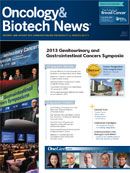Trying to Calculate the Economic Value of Dasatinib or Nilotinib for Imatinib-Resistant CML
Although it is now standard practice to utilize the second-generation TKIs dasatinib or nilotinib in patients whose CML has recurred while taking imatinib treatment, published support for the economic value of this approach is lacking.
Although it is now standard practice to utilize the second-generation tyrosine-kinase inhibitors dasatinib or nilotinib in patients whose chronic myeloid leukemia (CML) has recurred while taking imatinib treatment, published support for the economic value of this approach is lacking. Investigators from the University of Exeter, United Kingdom, conducted a review of the literature and produced an economic model to help fill this information gap.
They evaluated contributions to key databases (MEDLINE [including MEDLINE In-Process and Other Non-Indexed Citations], EMBASE [ISI Web of Science], Conference Proceedings Citation Index, as well as four other sites). Their research led to 15 relevant studies, the most recent from June 2009.
Two separate decision-analysis economic models for CML were utilized, in which patients with chronic- phase CML either showed the potential to become or did become resistant to a normal dose of imatinib (imatinib-resistant), or due to adverse events had to cease imatinib treatment (imatinib-intolerant). Another was used to evaluate patients with CML who had progressed to blast crisis.
Although the number of studies regarding the effectiveness of dasatinib and nilotinib for treating chronic-phase CML patients (who were either imatinib-resistant or imatinib-intolerant) was limited, the investigators found ample evidence for the clinical effectiveness of these agents, based on positive cytogenetic and hematologic responses.
However, it was very difficult, they stated, to come to any conclusions regarding cost-effectiveness with either dasatinib or nilotinib treatment of patients in those with imatinib-resistant CML. Serious data flaws were noted, in one way or another, for all of the economic models produced.
All available data regarding accelerated and blast crisis came from observational single-arm trials. Unfortunately, meaningful comparisons between the treatments was greatly undercut because of various and possible baseline characteristic variations.
Accelerated-phase and blast-crisis de novo models could not be expanded because the available clinical data were deficient. In addition, there was sparse evidence regarding the effectiveness of second-generation tyrosine kinase inhibitors (TKIs) compared with high-dose treatment with imatinib, which severely weakened the economic evaluations done by the manufacturers.
Interestingly, a separate review of the studies on the value of high-dose imatinib in patients with chronic-phase CML resistant to standard-dose imatinib revealed that up to one-third experienced a complete cytogenetic response (up to four-fifths experienced a complete hematologic response), with grade 3 or 4 adverse events occurring in 40% of patients (up to one-fifth discontinued treatment because of these adverse effects). In an economic analysis, nilotinib appeared to have greater costeffectiveness than high-dose imatinib, followed by dasatinib, in these resistant patients. However, they caution that the study was not based on direct comparisons with identical outcomes measures.
Although the second-generation TKIs appear to add clinical value to the armamentarium against CML, the clinicians acknowledge that a meaningful cost-effectiveness conclusion is not possible. Until a randomized, 3-way, double-blind clinical study involving dasatinib, nilotinib, and high-dose imatinib is conducted, they added, the true economic value of the second-generation TKIs cannot be revealed.
Rogers G, Hoyle M, Thompson Coon J, et al. Dasatinib and nilotinib for imatinib-resistant or -intolerant chronic myeloid leukaemia: a systematic review and economic evaluation. Health Technol Assess. 2012;16(22):1-410.
Loveman E, Cooper K, Bryant J, et al. Dasatinib, high-dose imatinib, and nilotinib for the treatment of imatinib-resistant chronic myeloid leukaemia: a systematic review and economic evaluation. Health Technol Assess. 2012;16(23): iii-xiii, 1-137.




